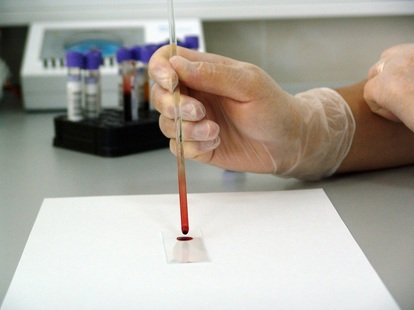What are Food Sensitivities?
When someone has an allergy, they typically experience an immediate headache, stomach upset, asthma, migraines or rashes when exposed to the dust, animal dander, molds, foods or chemicals that he or she is allergic to. A food sensitivity, however, shows up in a much more discrete manner.
A food sensitivity is considered a delayed immune response involving IgG, IgM or IgA antibodies against the aggravating food. These antibodies bind to food particles and cause inflammation to the body’s tissues. Symptoms include gas, bloating, joint pain, abdominal pain, fatigue, food cravings, mood changes, headaches, weight fluctuations and skin problems. The usual culprits for food sensitivities include eggs, wheat and other gluten-containing grains, soy, dairy, corn, tomatoes, citrus fruits, and chocolate, but the body can become sensitive to any type of food.
A food sensitivity is considered a delayed immune response involving IgG, IgM or IgA antibodies against the aggravating food. These antibodies bind to food particles and cause inflammation to the body’s tissues. Symptoms include gas, bloating, joint pain, abdominal pain, fatigue, food cravings, mood changes, headaches, weight fluctuations and skin problems. The usual culprits for food sensitivities include eggs, wheat and other gluten-containing grains, soy, dairy, corn, tomatoes, citrus fruits, and chocolate, but the body can become sensitive to any type of food.
How Do I Test for Food Sensitivities?
Since the symptoms of food sensitivities can be vague, it is difficult to determine which foods you are reacting to on your own. At the Butterfly Naturopathic Clinic, our Naturopathic Doctors have two accurate methods to determine which foods are the problem: an elimination diet or specialized laboratory testing.
The elimination diet involves following a hypoallergenic diet for 4-6 weeks, which consists of the elimination of commonly aggravating foods such as processed foods, gluten, dairy, corn, sugar, caffeine, tomatoes, eggs, soy, etc. After the 4-6 week elimination phase, you will reintroduce one food group at a time for 3 days each and monitor how you feel after eating each food group. This method is much more cost effective than the lab testing and helps you to become in tune with your body.
The other option is to take a blood test. After collecting your blood sample, it is sent to a specialized lab to test for immunoglobulins specific to different food types. For example. If there is a high level of immunoglobulin IgG bound to corn particles, then your body is mounting an immune response to corn, and it is therefore considered a food sensitivity.
The elimination diet involves following a hypoallergenic diet for 4-6 weeks, which consists of the elimination of commonly aggravating foods such as processed foods, gluten, dairy, corn, sugar, caffeine, tomatoes, eggs, soy, etc. After the 4-6 week elimination phase, you will reintroduce one food group at a time for 3 days each and monitor how you feel after eating each food group. This method is much more cost effective than the lab testing and helps you to become in tune with your body.
The other option is to take a blood test. After collecting your blood sample, it is sent to a specialized lab to test for immunoglobulins specific to different food types. For example. If there is a high level of immunoglobulin IgG bound to corn particles, then your body is mounting an immune response to corn, and it is therefore considered a food sensitivity.
Which Test is Best?
Both the elimination diet and lab testing have their pros and cons. The elimination diet takes more effort, will power and time to complete. It requires a strict adherence to the dietary protocol, and any deviation may require starting over. However, the elimination diet is more cost effective, more accurate when done correctly and it increases body awareness. It is considered the gold standard in assessing food sensitivities.
Laboratory testing is faster and easier to complete. The blood draw takes only a few minutes, and your results should arrive within three weeks after the blood sample has arrived. However, lab testing is not as accurate as the elimination diet and is more expensive.
Laboratory testing is faster and easier to complete. The blood draw takes only a few minutes, and your results should arrive within three weeks after the blood sample has arrived. However, lab testing is not as accurate as the elimination diet and is more expensive.






